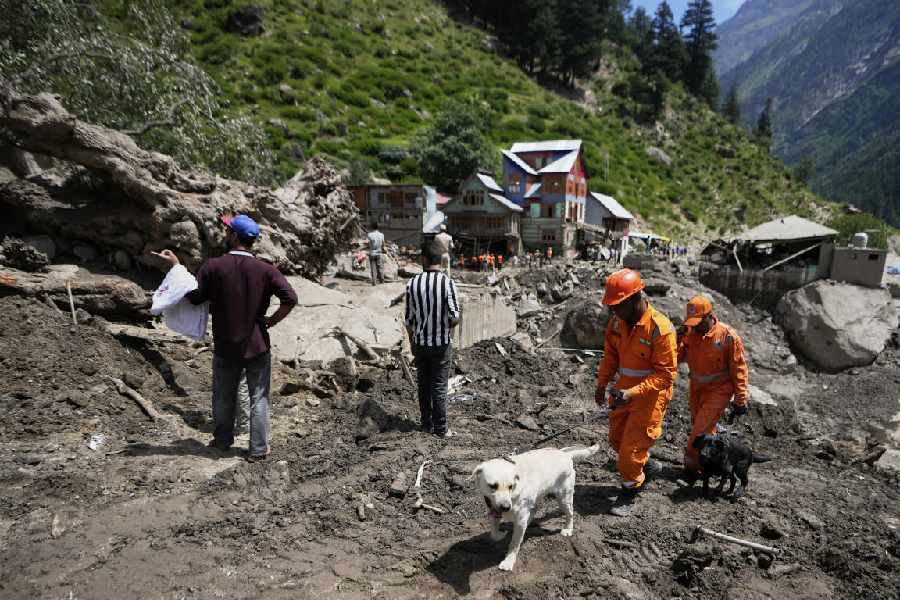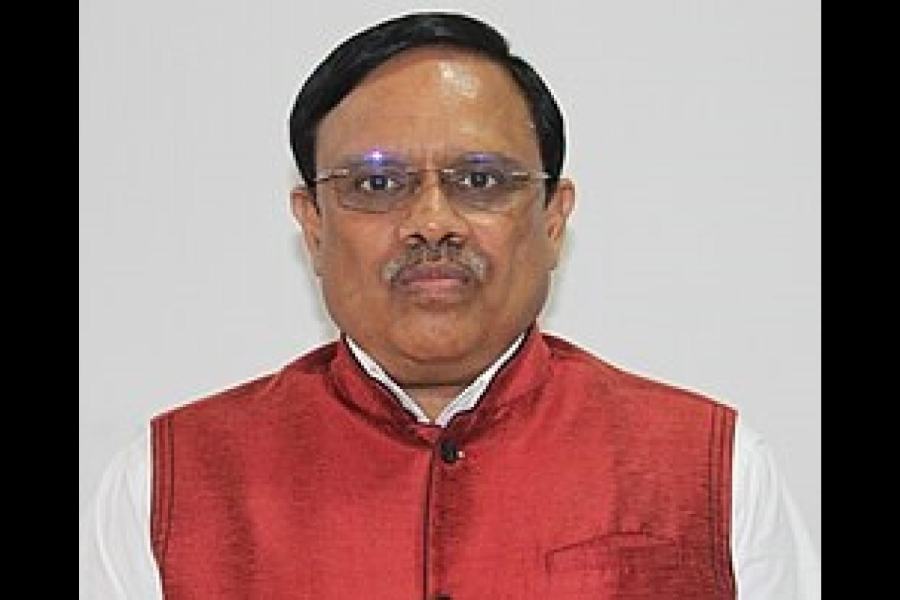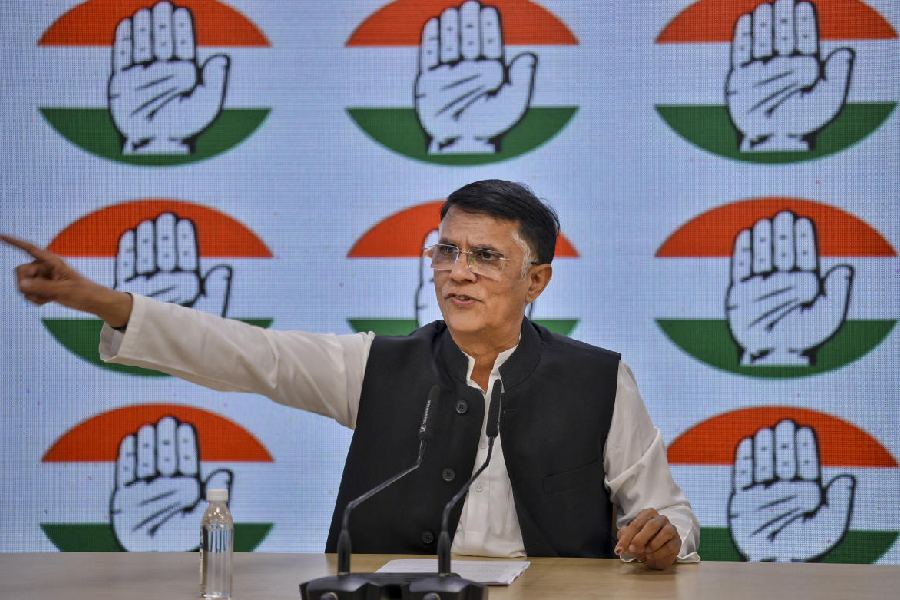 |
For artist Arpita Singh, everyday realities bring inspiration. A fine illustration is her painting, Watching, which shows a group of men in black coats seated on chairs, their heads turned to the left as if waiting for something to happen. In the background are letters, words and numbers, all of which relate to the judgement of the Best Bakery case.
Making sharp socio-political statements through her work though, isn’t Arpita’s primary intention as an artist. “You are a part of society, so whether you like it or not, you are involved with the problems of the time. And willingly or unwillingly, you are involved in politics,” reasons the artist.
Watching is just one of 47 canvases by Arpita that are currently adorning the walls of Delhi’s Vadehra Art Gallery. Called Picture Postcard, the exhibition is drawing connoisseurs by the dozen — a testimony to the fact that even after a gap of 12 long years, an Arpita Singh show in Delhi will be a success.
Why has Arpita ignored the Delhi art scene for such a long time? “I’ve been very busy with several solo and group shows in India and abroad, and Delhi’s turn came only now,” she says. Nevertheless she hopes to appease fans with the impressive body of work — seven oils, 20 watercolours and 20 drawings — on show at the gallery.
Arpita is mighty pleased with the fact that the Indian art scene is a booming industry today and is being taken so much more seriously now. “The young artists out there are a focused lot and are doing a very good job,” says Arpita. So has it become easier then for young artists to make a mark? “Not really,” she replies before adding, “But perhaps it has become easier financially and in terms of availability of different materials. Earlier colours and good paper were not available. Now though, there’s a wide range of these out there.”
But with art prices shooting up to stratospheric heights, isn’t art becoming the sole domain of just the well-heeled? Arpita has an answer for this too: “Just as there will always be a set of people buying expensive jewellery, there will always be a group of people buying art.” According to her what really makes a difference is the kind of art being produced and how it is going to influence society. “And this applies to other forms of art like writing, music and even films,” she says.
As an artist, Arpita always felt the urge to communicate through the medium of painting. “For me, the end is the ability to communicate, and for that one needs a voice and a language — both of which I have found in art,” she explains. The language of her canvas has changed over the years. “There have been different phases when I have moved from figurative art to abstract and then back again,” she says.
One such phase was when Arpita went firmly abstract for a good eight years. This was a time when she shunned colour for black and white. “I thought I was having lots of problems technically and needed to understand a few things before I did any more figurative work,” she recalls. At this juncture, Arpita confined herself to just drawings.
She also reckons that she has shortcomings as an artist — be it when it comes to figures or the use of a particular colour. More importantly, she believes in dealing with them head-on. So when Arpita felt she was unable to do justice to the colour black, she didn’t shy away from it completely and instead used it in several places in the same painting.
As a carefree teenager, Arpita would never have thought of devoting her life to the drawing board had it not been for Kamala Sengupta, the principal of Lady Irwin School in Delhi where she studied. “Had I stayed in Calcutta, my life would have been entirely different,” reckons Arpita who was born in Baranagar, but moved to Delhi with her mother and brother after her father’s death.
She first studied at Lady Irwin School and then joined Indraprastha College for Women to pursue a degree in philosophy. But it wasn’t long before her principal convinced her to join the department of Fine Arts at the Delhi Polytechnic. Sengupta had seen Arpita’s drawings and paintings in school and was confident that she’d do well wielding an artist’s brush. “Of course, I had no clue about art and would just draw in school like any other student,” remembers Arpita.
Scoring good grades or the fear of failing examinations never bothered her young mind. “I never took the trouble to look at the mark sheet and check if we had passed or failed. Yet somehow or the other, we’d find ourselves in the next class,” she quips. It was only at the end of her final year that Arpita learnt that she’d been entitled to scholarship money each year — something, which she’d never bothered to collect.
Arpita’s foray in the world of professional art only happened in 1960. She along with some of her fellow classmates — including her future husband, Paramjit Singh — founded a group called Unknown and held an exhibition. But success came a good two decades later when her paintings were selected in the 1980s for a number of shows including the Festival of India in London and Paris, Havana Biennale and Algeria Biennale among others.
“Having an artist for a husband was also a blessing as I was never expected to fulfil responsibilities like other housewives. I could concentrate on my work,” she says. Today both husband and wife work in separate studios and are open to healthy criticism from each other. “Criticism is very important and helps you grow,” explains Arpita.
The artist will soon be gearing up for her project, a group show in London. But, whether there’s a show coming up or not, there isn’t a single day when she the artist doesn’t paint in her studio on the second floor of her home in Chitranjan Park.
For Arpita, learning is a neverending process and reading is the fuel to her imagination. So when she is not painting, she’s immersed in books on history, civilisations and culture. And just maybe these will inspire her next group showing that’s pegged to unveil in London in the near future.
Photograph by Rupinder Sharma










